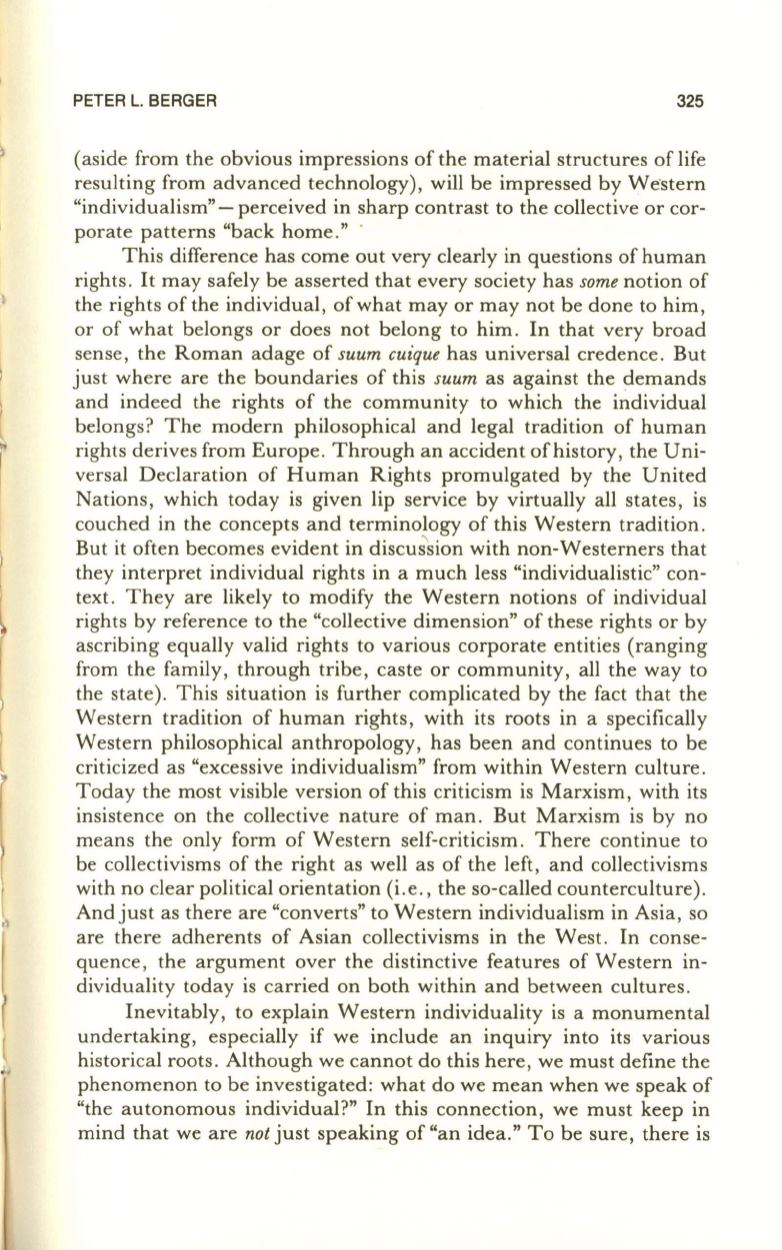
PETER
L.
BERGER
325
(aside from the obvious impressions of the material structures of life
resulting from advanced technology), will be impressed by Western
"individualism" - perceived in sharp contrast to the collective or cor–
porate patterns "back home." .
This difference has come out very clearly in questions of human
rights.
It
may safely be asserted that every society has
some
notion of
the rights of the individual, of what mayor may not be done to him,
or of what belongs or does not belong to him . In that very broad
sense, the Roman adage of
suum cuique
has universal credence. But
just where are the boundaries of this
suum
as against the demands
and indeed the rights of the community to which the individual
belongs? The modern philosophical and legal tradition of human
rights derives from Europe. Through an accident of history, the Uni–
versal Declaration of Human Rights promulgated by the United
Nations, which today is given lip service by virtually all states, is
couched in the concepts and terminology of this Western tradition .
But it often becomes evident in discussion with non-Westerners that
they interpret individual rights in a much less "individualistic" con–
text. They are likely to modify the Western notions of individual
rights by reference to the "collective dimension" of these rights or by
ascribing equally valid rights to various corporate entities (ranging
from the family, through tribe, caste or community, all the way to
the state). This situation is further complicated by the fact that the
Western tradition of human rights, with its roots in a specifically
Western philosophical anthropology, has been and continues to be
criticized as "excessive individualism" from within Western culture.
Today the most visible version of this criticism is Marxism, with its
insistence on the collective nature of man. But Marxism is by no
means the only form of Western self-criticism. There continue to
be collectivisms of the right as well as of the left, and collectivisms
with no clear political orientation (i.e., the so-called counterculture).
And just as there are "converts" to Western individualism in Asia, so
are there adherents of Asian collectivisms in the West. In conse–
quence, the argument over the distinctive features of Western in–
dividuality today is carried on both within and between cultures .
Inevitably, to explain Western individuality is a monumental
undertaking, especially if we include an inquiry into its various
historical roots. Although we cannot do this here, we must define the
phenomenon to be investigated: what do we mean when we speak of
"the autonomous individual?" In this connection, we must keep in
mind that we are
not
just speaking of "an idea." To be sure, there is


